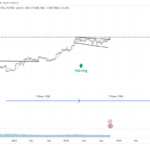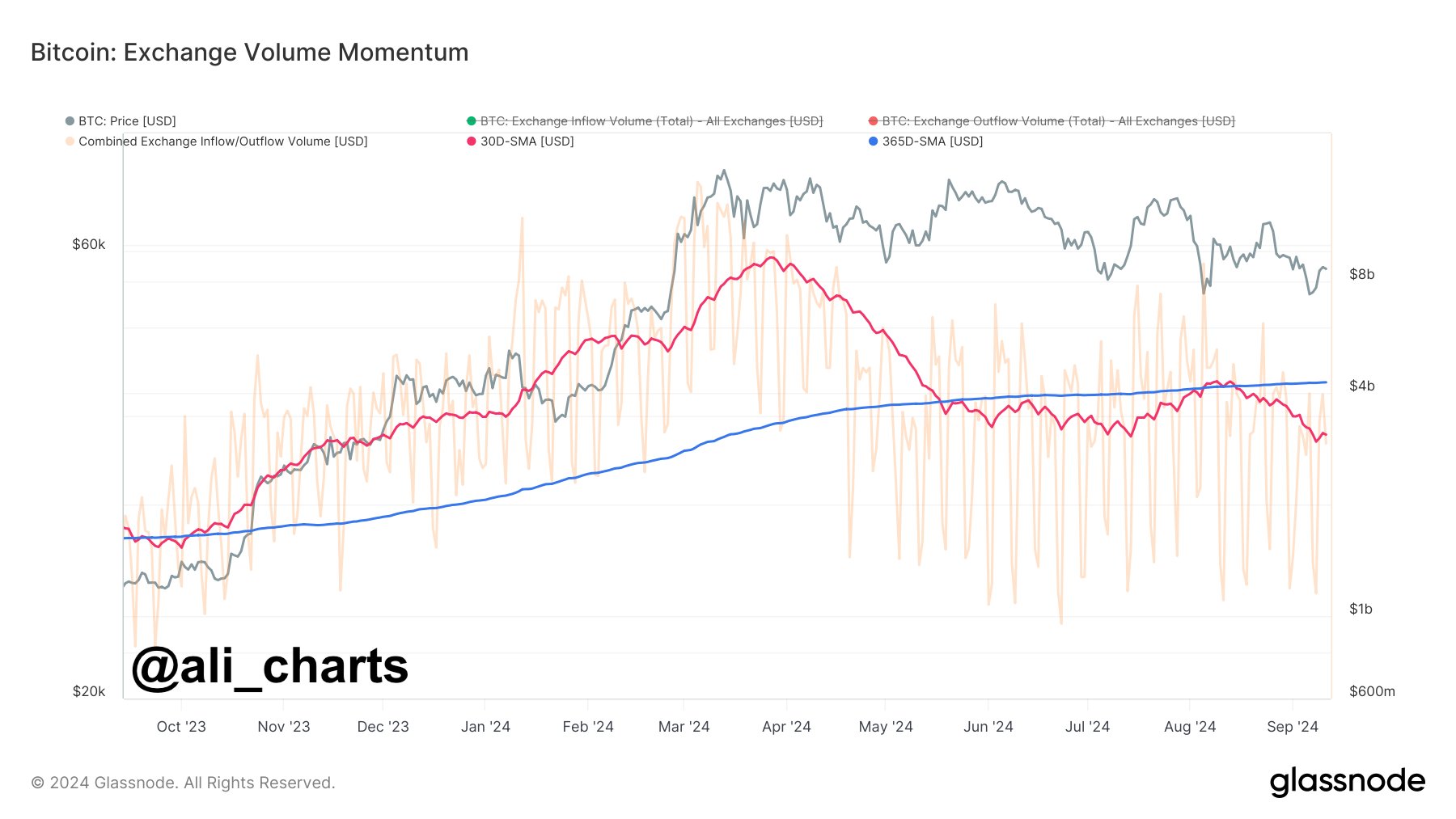Recent market analysis shows that Bitcoin has been trading below its 200-day simple moving average (SMA) for over a month, raising investor concerns.
According to data shared by analyst Ali Martinez, Bitcoin’s movement below this level has often signaled a period of bearish momentum, with potential corrections to follow. Currently, the 200-day SMA is around $64,000, a level Bitcoin last approached roughly four weeks ago.
Bitcoin’s inability to break back into this level suggests continued resistance in the market. According to Martinez, Bitcoin’s price could be headed toward its Realized Price at approximately $31,500, which is historically a key support level during downtrends.
Essentially, the technical data presents a grim outlook for Bitcoin, even as it has rebounded above the $58,000 range, a threshold it continues to defend. Trading at $58,021, a drop to $31,500 will wipe out over 45% of capital from current investors, even dealing a more significant blow to altcoins.
Declining Bitcoin On-Chain Activity
In conjunction with Bitcoin’s price movement, exchange volume momentum also reflects diminishing market interest. Recent data indicates a significant drop in on-chain Bitcoin activity related to exchanges, suggesting reduced investor engagement.
This trend is highlighted by the substantial fluctuations in Bitcoin’s exchange volume over the past year. While there have been periods of increased trading activity, the overall trend has been downward since this month, signaling a decrease in market participation.
Martinez’s chart reveals a declining trend in trading activity, as indicated by the 30-day Simple Moving Average (SMA). It has been decreasing since April 2024, after a period of growth from October 2023.
In contrast, the 365-day SMA shows a gradual upward trend, indicating sustained long-term interest in Bitcoin.
The discrepancy between the short-term decline and long-term rise suggests a current market hesitation, while interest in Bitcoin persists over a longer horizon.
Fewer New Bitcoin Addresses
Further data indicates a stagnation in new Bitcoin addresses. Since 2022, the number of new addresses has remained relatively flat, showing a 7-day change of -0.02%. This flat growth suggests fewer new participants are entering the Bitcoin market, indicating reduced speculative activity.
In contrast, the number of zero-balance addresses has steadily risen, up 1.10% over the past week. This increase reflects more users either exiting the market or transferring assets to long-term storage.
Disclaimer: This content is informational and should not be considered financial advice. The views expressed in this article may include the author’s personal opinions and do not reflect The Crypto Basic’s opinion. Readers are encouraged to do thorough research before making any investment decisions. The Crypto Basic is not responsible for any financial losses.












